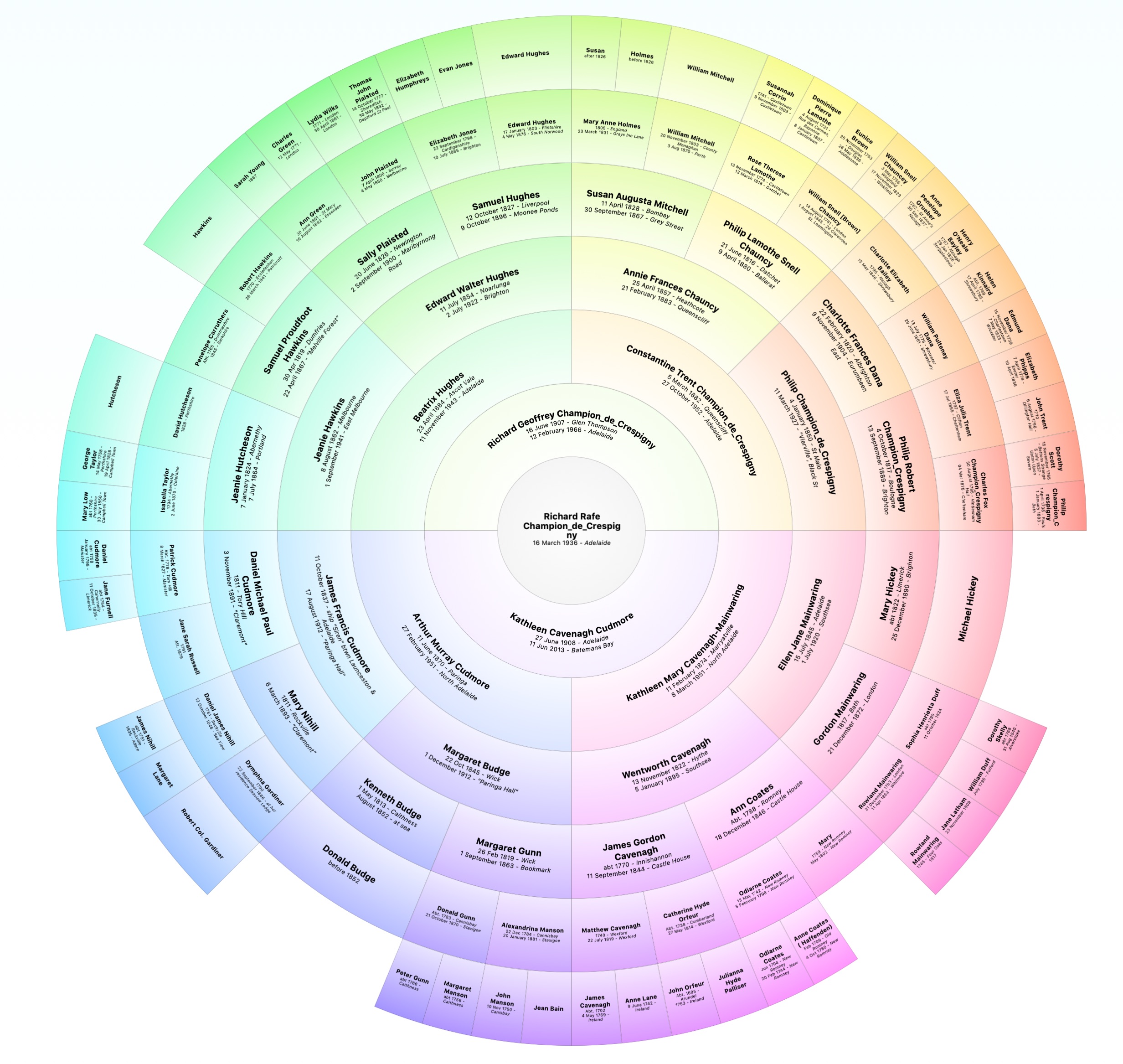AncestryDNA has launched a new feature, a chromosome painter, which ‘paints’ your DNA with your ethnicities, showing the DNA regions that make up your ethnicity estimate.
Overnight my kits updated to show the new information. It’s found under the ‘DNA Story’ tab.
Five years ago when I looked at my ethnicity AncestryDNA reported it as 100% European:
- 59% from Great Britain, which includes England, Scotland, Wales and the Isle of Man
- 20% Europe East
- 12% from Ireland
- 4% from Finland / North-west Russia
- 2% from Europe-West
- 2% from Italy/Greece
- <1% from the Iberian peninsula
At the time, the results seemed to underestimate my German heritage. My mother and her ancestors are from Germany.
It has now refined the results:
- Scotland 41%
- Germanic Europe 33%
- England and Northwestern Europe 13%
- Sweden and Denmark 6%
- Wales 3%
- Ireland 3%
- Baltics 1%
At https://support.ancestry.com/s/article/AncestryDNA-Ethnicity AncestryDNA explains it calculates its ethnicity estimate:
To discover where you come from, we compare your DNA to the DNA of people with known origins from around the world. These people are our reference panel. Our reference panel has over 56,580 DNA samples from people with deep regional roots and documented family trees. We survey your DNA at over 700,000 locations and look at how much DNA you share with people from the reference panel in each ethnicity region.
Recently AncestryDNA provides estimates of ethnicity inheritance from each parent. They use your DNA matches to split your DNA into the halves that came from each parent. First, they find the segments that connect only to one parent or the other. Then, they separate out the DNA you got from each parent by piecing together the segments that overlap. After they have separated your DNA into the parts that correspond with each parent, they calculate an ethnicity estimate on the two halves. From this, they can show your “ethnicity inheritance”—the ethnicity percentages passed down to you from each parent.
These are my results.
Both of my parents have tested with AncestryDNA, so I can compare the estimate with its results. The differences are partly because I inherited only part of their DNA.
Column 1 has the ethnicity percentage I am estimated to have inherited from my parent and column 2 has their ethnicity estimate from their own test with AncestryDNA.
| % I inherited from parent 1 | My father’s ethnicity estimate | |
| Scotland | 41% | 43% |
| Germanic Europe | 0% | 3% |
| England and Northwestern Europe | 6% | 8% |
| Sweden and Denmark | 0% | 0% |
| Wales | 3% | 14% |
| Ireland | 0% | 31% |
| Basque | 1% |
| % I inherited from parent 2 | My mother’s ethnicity estimate | |
| Scotland | 0% | 2% |
| Germanic Europe | 33% | 79% |
| England and Northwestern Europe | 7% | 10% |
| Sweden and Denmark | 6% | 3% |
| Wales | 0% | 0% |
| Ireland | 3% | 0% |
| Eastern Europe and Russia | 0% | 6% |
| Baltics | 1% | 0% |
It seems doubtful to me that I inherited Irish ethnicity from my mother. She herself shows no Irish ethnicity in her results and my documented family tree has an Irish connection on my father’s side, reflected in his ethnicity results, with no Irish connections for my mother.
AncestryDNA’s Chromosome Painter displays these results:


When I look at the results by different regions I see that Ireland has been assigned solely to chromosome 7, as has Wales. AncestryDNA has allocated Wales to one of my parents and Ireland to the other.



I suspect the breakdown by chromosome needs to be refined.
By way of comparison this is my father’s AncestryDNA chromosome painter picture. It can be compared with the map I have developed using DNAPainter.

For the most part AncestryDNA has allocated regions to whole chromosomes.
So far at DNAPainter I have only managed to paint just over a quarter of my father’s DNA profile. I can make some comparison between the two diagrams.
The Basque inheritance AncestryDNA shows on the paternal chromosome 1 appears to be inherited from Philip Chauncy and Susan Mitchell, my father’s great great grandparents.
My father has inherited Scottish and Irish ancestry from both his mother and his father. His Welsh ancestry was inherited only from his father. This does correspond with my known tree.
English ancestry has only been inherited from his mother; English ancestry is not so well defined for me – many forebears were born in England but had come from elsewhere, the issue becomes from what generation ethnicity is determined.
My father has inherited his Germanic Europe ancestry from his father on chromosome 6. It is not clear which ancestors might be responsible for this inheritance.
To be useful AncestryDNA’s Chromosome Painter diagrams clearly need more work.
I remain more interested in ancestral contributions to DNA rather than the vague attributions of ethnicity.
Unfortunately, for privacy reasons (or so it is said), AncestryDNA chooses not share detailed information about DNA matches. To obtain the details and be able to derive the information about which DNA you inherited from which ancestors you need to use other companies, such as MyHeritage, Family Tree DNA, or GedMatch.
RELATED POSTS AND FURTHER READING:
- Looking at my ethnicity as determined by DNA testing
- ‘ethnicity’ DNA: beware of inheritance from daughter to mother
- Update to AncestryDNA communities: Vinnie has views
- DNA Painter – a new tool
- AncestryDNA articles
Wikitree:































































